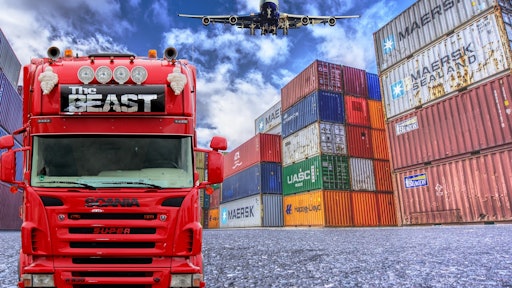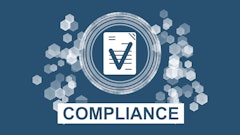
Businesses are under renewed pressure from cyber threats. The supply chain industry is particularly at risk because of all the players involved in moving goods from point A to point B. In this article, we’ll focus on how companies in this industry can protect themselves against cyber threats.
Create a Recovery Plan
There’s an adage that comes to mind here. “Hope for the best but plan for the worst.” Approach cybersecurity from the point of view that it’s only a matter of time before a breach occurs. Shore up your defenses, but also ensure that you have a recovery plan in place.
This plan should provide clear guidelines on what steps to take in the event of a breach. Assign employees specific tasks and ensure that they know who to contact and what action to take. The faster the response, the better able you’ll be to limit the damage.
Run a Security Audit Regularly
It’s essential to run regular security audits. Identify potential gaps in the company’s defenses. Then come up with a clear plan to deal with these. A security audit of this nature should be conducted at least once or twice a year.
Remember also to check:
- Old permissions and devices: Are there old devices that might still be linked to your system? What about permissions granted to cloud service providers? Ensure that all permissions are revoked and devices disconnected.
- Staff access: Employees’ access to your system must be as limited as possible. They should only be able to access those areas of the system that they need for the job at hand. During the audit, confirm that access for ex-employees is revoked. Also, review access for those who’ve changed positions within the company.
- Program updates: How much third-party software does your company use in each branch? How up to date is this software across all departments?
Improve Physical Security
This might seem odd when this article is about cyber threats, but it’s important. If a bad actor can gain physical access to your offices, they’re more easily able to launch an attack. Re-evaluate your physical security to tighten up security.
No third-party contractors or clients should be allowed unfettered access to your offices or cargo. Malicious code can, for example, be built into a QR code. When that item is scanned, the virus is uploaded into the computer system.
Review Electronic Links
You may think that your system is only linked to first-tier suppliers. This isn’t strictly true. They’re dealing with their suppliers and clients, and so they’re connected to other companies. If there are any weak links in the chain, you might all be at risk.
Say, for example, that a bad actor hacks the systems of one of the transport companies further down the chain. They might then send an invoice to one of your first-tier suppliers requesting payment for delivery. Naturally, they’ll substitute their banking details for the legitimate ones.
When your first-tier supplier forwards this information to you, you confirm the delivery. It’s a legitimate delivery, so everything seems fine. You’ll then authorize payment to the incorrect account number, not knowing any better.
Another type of electronic link to evaluate is that of IoT devices on your network. Cargo scanners make inventory a lot simpler. As discussed above, they could scan a code containing a virus. Since they also provide access to your primary systems, the devices themselves might be a target for hackers.
The way to limit your liability here is to connect those devices only to the part of the system that they need to access.
Conduct Regular Penetration Testing
It’s wise to conduct penetration scanning at least once a year. Make it part of your general security audit, or run it separately if you prefer. This becomes critical as bad actors start to use more sophisticated methods to breach systems.
At one stage, a password with just letters and numbers was considered hard to crack. As our tech and systems age, they’re more at risk from sophisticated hacking techniques.
Security Awareness Training
It just takes one employee to download the wrong meme to infect your system. Security awareness training has become critical to make employees aware of the risks.
Take the case below as an example.
According to the Wall Street Journal, a CEO of an unnamed company in the United Kingdom paid out £220,000 in an unusual attack. The attackers used AI in a kind of audio deepfake attack.
It was an attack that was pure genius. The phishers used AI to simulate the voice of the CEO’s boss. He recognized the voice, and so effected a transfer of £220,000. It was only when the phishers asked for more money that the situation became suspicious.
Granted, this was a highly sophisticated attack. That said, 65% of crime syndicates employ spear phishing techniques. With these attacks, the phishers carefully research their targets. They’re patient, sometimes even building a relationship with their victims.
They might impersonate clients, other employees, or even suppliers. The only way around this type of attack is independent confirmation that the request is genuine. Employees not aware of this kind of attack won’t see it coming.
Bad actors use several attack vectors to get what they want. In many cases, vigilance is the only protection.
Re-Evaluate Your Vendor Agreements
Your third-party vendors must be held to the same high standard as your company. They’re accessing your systems. If they don’t follow strict security protocols, your systems are at risk. The one way to ensure that they take security as seriously as you do is to hold them accountable. Work this into the contract to avoid issues later on.
Final Notes
Securing your supply chain from cyber threats is more complicated than with many other businesses. There are workable ways to manage, though. Start by assessing your systems and addressing any weaknesses there.
Conduct periodic security audits and penetration testing to guard against more sophisticated modes of attack. Ensure that your employees understand the potential risks and how they should react. Finally, close the loop by ensuring that the companies you deal with are taking security just as seriously.


























